This article was co-authored by Laura Reber, SSP. Laura Reber is a school psychologist and founder of Progress Parade, an organization that provides 1:1 online tutoring with hand-picked specialists to students with academic needs, ADHD, learning disabilities, autism, and social-emotional challenges. Laura works with a team of school psychologists and specialized teachers to create personalized approaches for homework support, academic intervention, homeschooling, unschooling, and more. Laura holds a BS in Psychology from Truman State University and a Specialist in School Psychology degree (SSP) from Illinois State University.
There are 18 references cited in this article, which can be found at the bottom of the page.
wikiHow marks an article as reader-approved once it receives enough positive feedback. In this case, several readers have written to tell us that this article was helpful to them, earning it our reader-approved status.
This article has been viewed 157,149 times.
Even infants younger than a year can display indicators of autism spectrum disorders (ASD). These signs are sometimes difficult to distinguish, and parents might confuse them with hearing problems. Some babies might actually have hearing loss or may simply be late bloomers. If your child is showing certain autistic traits, you should request an evaluation from your pediatrician. [1] . Your doctor can evaluate your baby at each well child check and track their progress. The official autism screening occurs when your child is 18 months old, but children should be evaluated for general developmental delays as early as 9 months. Early diagnosis is important to the child's development.[2]
Things You Should Know
- Pay attention to your baby's facial expressions and sounds. Typical babies usually smile, express happiness, and start babbling by 7 months.
- Watch for delayed speech and problems interacting with others. Autistic children struggle with verbal communication and have a hard time playing with other kids.
- Notice how your child reacts to sensory stimuli. Kids with autism may get overstimulated easily and react strongly to new smells or textures.
Steps
Symptoms of Autism in Infants
-
1Note your baby's facial expression. By 7 months old, typical babies express happiness and smile. [3] [4]
- A baby's first smile often occurs even before 3 months.
- If a baby doesn't follow objects with its eyes by 3 months, this could be a very early indicator of autism.
- Observe their other facial expressions.
- By 9 months old, babies communicate with others by displaying certain expressions like grimacing, pouting and grinning to fit their mood.
-
2Notice when babbling begins. Babies that develop typically will babble by the time they are 7 months old.[5] [6]
- The noise might not make any sense.
- It is common for babies to make repetitive sounds, but autistic babies will make different sounds and rhythms.
- By seven months, non-autistic children are able to laugh and make squealing sounds.
Advertisement -
3Consider when your child begins speaking. Some autistic children experience a delay in speaking, or never learn to speak at all. Around 15-20% of autistic people never speak,[7] although this does not mean they do not communicate.
- By one year, non-autistic children are able to say single words such as "Mama" and "Dada".
- By age 2, most children are able to string words together. A typical 2-year-old should have a vocabulary of more than 15 words.
-
4Check your child's response to language and play. An autistic child might not respond to their own name or avoid play with others. [8] [9]
- By 7 months, a typical child responds to simple games like peekaboo.
- A non-autistic child responds to its own name at about one year old.
- By 18 months, a typical child will start to play "pretend" games, such as pretend feeding a baby doll. Autistic children tend not to play pretend, and may appear unimaginative to onlookers.
- By age two, non-autistic children will imitate your words and actions.
- Pay attention to speech regression. Some infants meet their milestones and then lose skills at an older age.
-
5Examine your child's movements. Babies will reach for objects typically by 7 months of age. Place a toy out of your child's reach to see if he will reach for it. [10] [11]
- Babies as young as 7 months old will try to attract your attention with movements. Autistic children may be less active.
- By 6 months old, children should turn their head towards sounds they hear. If your child does not do this they may have a hearing problem, or early symptoms of autism.
- Many babies start waving bye-bye and pointing to objects they want by the time they are 12 months old.
- If your child has not started to walk or crawl by 12 months, this is a very serious developmental disability.[12]
- By age 1, most babies will start to use gestures such as shaking their head to say "no".
- If your child cannot walk by age 2, you should definitely have them evaluated by a doctor for autism and other disabilities.
-
6Look for stimming. Stimming serves a variety of purposes: from self-calming to expressing emotions. If your young child waves their hands, rocks their body, or spins in circles constantly, this is a likely sign of autism.[13]
Signs of Autism in Older Children
-
1Observe your child's interaction with others. Autistic children may not develop friendships with peers. They may want to form friendships but not know how, or they may not really care. [14]
- They sometimes struggle with understanding and reacting to others' feelings.
- Autistic children may not want to join group activities, either because it's hard or because they aren't interested.
- Autistic children may be unusual in terms of personal space: some may resist touch or not understand personal space.
- Another symptom of autism is when a child does not respond to being comforted by others when they are distressed.
-
2Notice the child's nonverbal communication. Autistic children may feel uncomfortable with eye contact. [15]
- They may have a flat facial expression, or exhibit exaggerated experiences.
- Autistic children may not understand or respond to other's non-verbal cues.
- Autistic people may not use gestures or have trouble interpreting when others use gestures.
- Autistic children often don't point to objects or respond to others pointing.
-
3Pay attention to your child's verbal communication. Children who do not develop speech or have delayed speech may be autistic.[16]
- Autistic children who are verbal may use a flat or monotone voice.
- Some autistic kids use echolalia, or the repetition of words and phrases, to communicate and focus. For example, you may notice that if you ask them a question, they'll repeat the question[17] back to you instead of answering it.
- Reversing pronouns (using "you" instead of "I") is another common trait of children who have ASD.
- Many autistic people don't understand jokes, sarcasm, or teasing.
- Some autistic people may develop speech later, or not at all. They can live happy and functional lives, using alternative communication such as typing, sign language, or picture exchange. Early intervention can help an autistic child learn how to use these tools.
-
4Determine whether your child has passionate special interests. Fascination with one topic, like computer games or license plates, may indicate autism.[18] Autistic people become fascinated with particular subject areas, studying them passionately and sharing information with anyone who will listen (enthusiastically or not).
- For example, a younger child might be almost obsessively fascinated with dinosaurs or trains.[19]
- Autistic people often become fascinated with memorizing categorized facts and figures.
-
5Consider whether your child's interests are considered "age-appropriate." Autistic people's emotional development differs from the development of their peers, and this may result in them liking different things.
- Children with autism are less likely to enjoy technology and pop cultural related interests or activities. [20]
- Don't be surprised if a 12-year-old reads classical literature for fun and watches cartoons for young children. They may be both "behind" and "ahead" in some respects.
-
6Watch how they play. Autistic children tend to play differently than other children do,[21] focusing more on systematizing than on imaginary play. They may show unusual aptitude with STEM-type toys.
- Autistic kids may fixate on a part of a toy, such as the wheels.
- One sign of autism is lining up toys in different patterns.
- #*Ordering things does not necessarily indicate a lack of imagination. Autistic children may have intense inner worlds that are not easily detected by adults. [22]
-
7Pay attention to how your child reacts to sensory stimuli. Many autistic children have Sensory Processing Disorder, a condition in which their senses may be hypersensitive, or hyposensitive. [23]
- Children with Sensory Processing Disorder may become overwhelmed easily when they are overstimulated.
- Notice if your child hides from loud things (e.g. the vacuum cleaner), wants to leave events early, has trouble concentrating when there are distractions, is constantly active, or gets upset in loud or crowded areas.
- Some autistic children react strangely to strong smells, bright colors, unusual textures, and specific noises, even if those stimuli don't seem strong to other people.[24]
- Children with autism are usually spiteful towards music.
- Children with Sensory Processing Disorder will often have meltdowns or act out when they are over stimulated. Others may withdraw.
-
8Take note of meltdowns. Meltdowns appear similar to tantrums, but they are not thrown on purpose, and cannot be suppressed once they have begun.[25] They occur when bottled-up stress explodes to the surface. Sometimes they are triggered by sensory overload.
-
9Examine your child's routine. Many autistic children need routines in order to feel secure, and will become very distressed if the routine is disrupted. For example, your daughter might insist on sitting in the same chair at dinner each night or she might insist on eating her foods in a particular order.
- Many autistic people follow specific routines or rituals when they are playing or doing certain tasks, and autistic children may become very upset by changes in this routine.
-
10Watch for social mistakes. While all children can do rude or inappropriate things, autistic people will do them more frequently, and act surprised and apologetic when told so. This is because autistic people don't learn social norms as easily, and may need to be taught explicitly what is appropriate and inappropriate.
- For instance, you might notice that your child doesn't smile when you smile, they have trouble making friends, they don't make eye contact, or they don't seem to understand other people's emotions.[26]
-
11Keep watch for other symptoms. Autism is a complex disability that affects every person differently. Here are some examples of symptoms that some autistic people have:[27]
- Hyperactivity (this may come and go)
- Impulsivity
- Short attention span
- Aggression
- Self-injury
- Temper tantrums or meltdowns
- Unusual eating or sleeping habits
- Unusual mood or emotional reactions
- Lack of fear or extreme fear of harmless situations
- Distinct facial features. In a 2011 issue of Molecular Autism, researchers found out that autistic children have distinct differences in facial characteristics.[28] The study found they had wider eyes, and a "broader upper face," compared with typically developing children.
- Abnormal lung airways. In 2013, a study was published in the Journal of Autism and Developmental Disorders, claiming that "Bronchoscopic evaluations revealed that some children have double branching of bronchi (designated "doublets") in the lower lungs airways, rather than normal, single branching. Retrospective analyses revealed only one commonality in them: all subjects with doublets also had autism or autism spectrum disorder (ASD)."[29]
Expert Q&A
-
QuestionAs a teacher, are there any signs of autism I should be aware of?
 Laura Reber, SSPLaura Reber is a school psychologist and founder of Progress Parade, an organization that provides 1:1 online tutoring with hand-picked specialists to students with academic needs, ADHD, learning disabilities, autism, and social-emotional challenges. Laura works with a team of school psychologists and specialized teachers to create personalized approaches for homework support, academic intervention, homeschooling, unschooling, and more. Laura holds a BS in Psychology from Truman State University and a Specialist in School Psychology degree (SSP) from Illinois State University.
Laura Reber, SSPLaura Reber is a school psychologist and founder of Progress Parade, an organization that provides 1:1 online tutoring with hand-picked specialists to students with academic needs, ADHD, learning disabilities, autism, and social-emotional challenges. Laura works with a team of school psychologists and specialized teachers to create personalized approaches for homework support, academic intervention, homeschooling, unschooling, and more. Laura holds a BS in Psychology from Truman State University and a Specialist in School Psychology degree (SSP) from Illinois State University.
School Psychologist The two biggest deficits for students on the autism spectrum will be social skills and language. However, as an educator, you never want to tell a parent you think their child has autism. Instead, you might refer them to a professional, like a speech language therapist for a student who isn't at the same verbal level as their classmates.
The two biggest deficits for students on the autism spectrum will be social skills and language. However, as an educator, you never want to tell a parent you think their child has autism. Instead, you might refer them to a professional, like a speech language therapist for a student who isn't at the same verbal level as their classmates.
Warnings
- Never consent to a therapy that you would feel uncomfortable giving to a neurotypical child (e.g. quiet hands), or that has been classified as torture (e.g. electroshock therapy).⧼thumbs_response⧽
References
- ↑ http://www.cdc.gov/ncbddd/autism/signs.html
- ↑ http://www.cdc.gov/ncbddd/autism/screening.html
- ↑ http://www.parents.com/baby/health/autism/autism-month-by-month-guide/
- ↑ http://www.cdc.gov/ncbddd/autism/signs.html
- ↑ http://www.parents.com/baby/health/autism/autism-month-by-month-guide/
- ↑ http://www.cdc.gov/ncbddd/autism/signs.html
- ↑ Autism Acceptance Month: Myths About Autism
- ↑ http://www.parents.com/baby/health/autism/autism-month-by-month-guide/
- ↑ http://www.cdc.gov/ncbddd/autism/signs.html
- ↑ http://www.parents.com/baby/health/autism/autism-month-by-month-guide/
- ↑ http://www.cdc.gov/ncbddd/autism/signs.html
- ↑ https://www.cdc.gov/ncbddd/actearly/milestones/milestones-2yr.html
- ↑ https://www.cdc.gov/ncbddd/autism/signs.html
- ↑ http://www.cdc.gov/ncbddd/autism/signs.html
- ↑ http://www.cdc.gov/ncbddd/autism/signs.html
- ↑ http://www.cdc.gov/ncbddd/autism/signs.html
- ↑ Laura Reber, SSP. School Psychologist. Expert Interview. 15 May 2020.
- ↑ http://www.cdc.gov/ncbddd/autism/signs.html
- ↑ Laura Reber, SSP. School Psychologist. Expert Interview. 15 May 2020.
- ↑ Cynthia Kim: Chronologically Out of Step
- ↑ Cynthia Kim: The Importance of Play
- ↑ [1]
- ↑ http://www.cdc.gov/ncbddd/autism/signs.html
- ↑ Laura Reber, SSP. School Psychologist. Expert Interview. 15 May 2020.
- ↑ Cynthia Kim: Anatomy of a Meltdown
- ↑ Laura Reber, SSP. School Psychologist. Expert Interview. 15 May 2020.
- ↑ http://www.cdc.gov/ncbddd/autism/signs.html
- ↑ http://www.cbsnews.com/news/children-with-autism-have-distinct-facial-features-study/
- ↑ http://www.ncbi.nlm.nih.gov/pubmed/22926922
- Mayo Clinic: Autism Symptoms
- ASAN: About Autism
- Autism Acceptance Month: What is Autism? (contains links to resources)
- Parent Resource Links
- Cynthia Kim: Scenes from an Autistic Childhood Autistic advocate Cynthia Kim gives examples of what autism looks like in day-to-day life.
About This Article
If your child is showing early autistic traits, request an evaluation from your pediatrician, who can evaluate them as early as 9 months and then track their progress. If your baby doesn’t follow objects with their eyes or smile by 3 months old, these could be very early signs of autism. Typically, babies will also babble by the time they’re 7 months old and begin saying single words by 1 year, but autistic babies may never speak. Around this age, most babies will also respond to simple games and respond to their name, but autistic babies may not have this ability. Another early indicator of autism is if your baby isn’t crawling or gesturing by 12 months. You’ll also want to look for stimming, like rocking, spinning, or waving constantly, as a possible sign of autism. To learn how to watch for sensory stimuli as a sign of autism, keep reading.
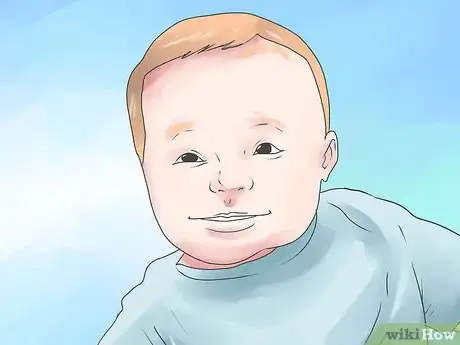

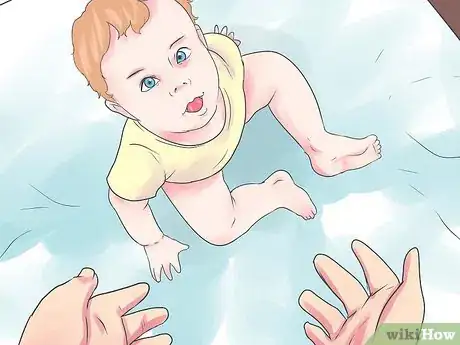
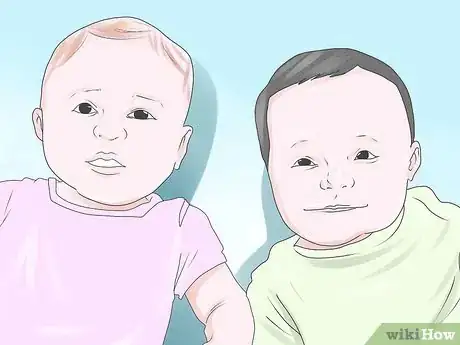
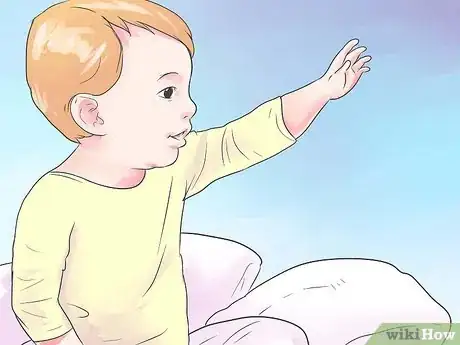
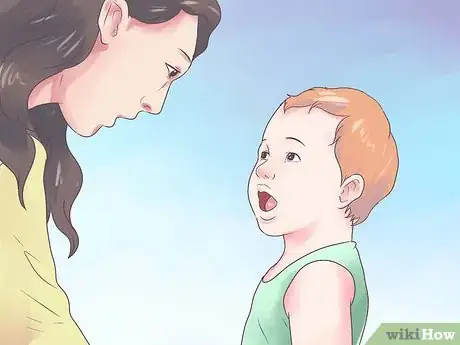
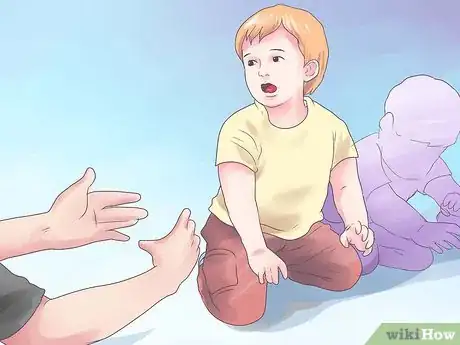
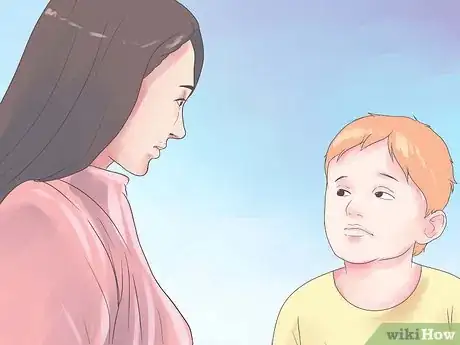
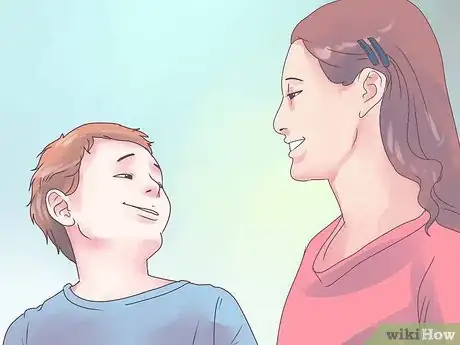

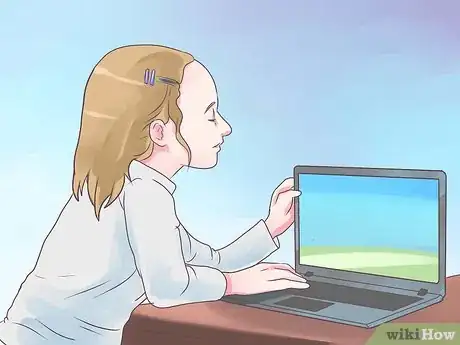
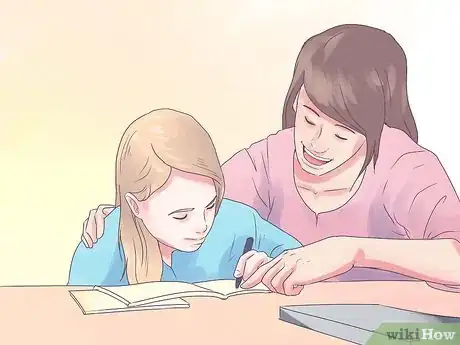
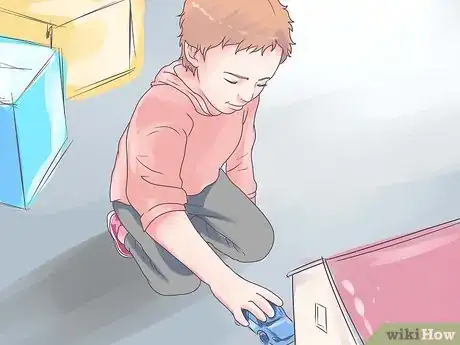
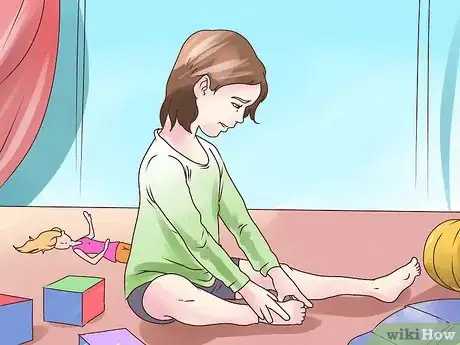
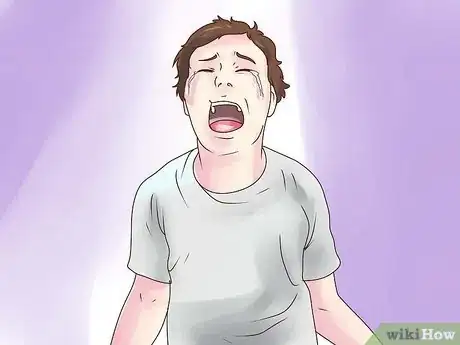

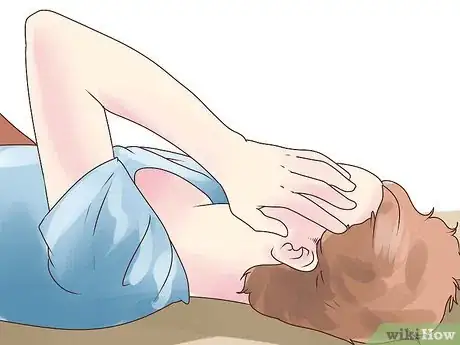
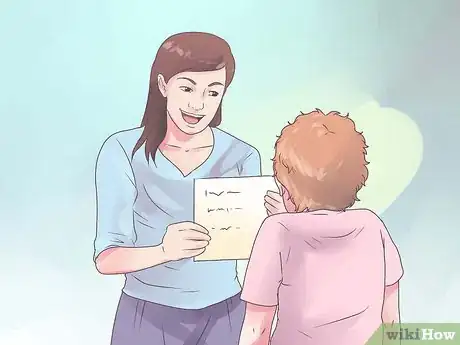


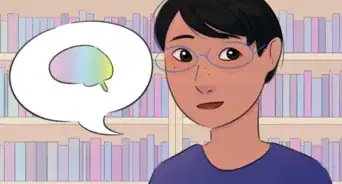

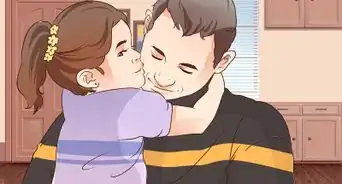

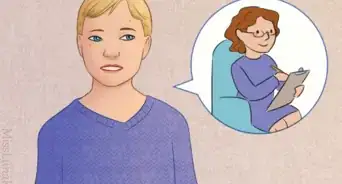

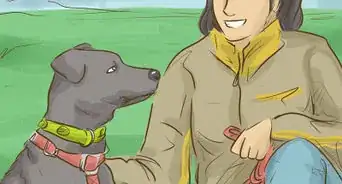


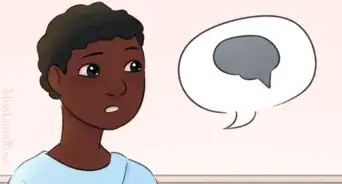

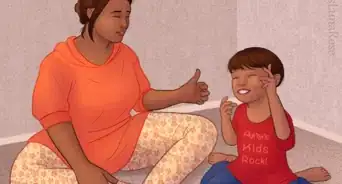









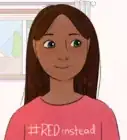
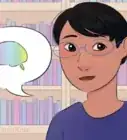
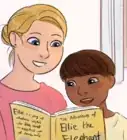



































Medical Disclaimer
The content of this article is not intended to be a substitute for professional medical advice, examination, diagnosis, or treatment. You should always contact your doctor or other qualified healthcare professional before starting, changing, or stopping any kind of health treatment.
Read More...